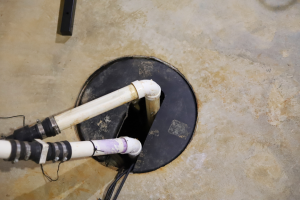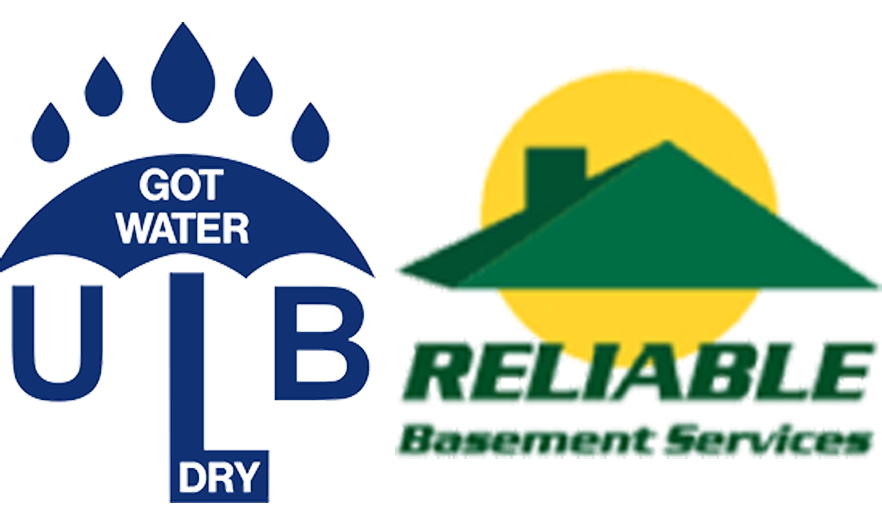
If you have a basement in your home, you may be familiar with the struggle of dealing with mold growth. Mold is a common problem in basements, as these areas tend to be dark, damp, and poorly ventilated. It thrives in moist environments and can wreak havoc on your home and health if left unchecked.
Mold not only looks unsightly, but it can also cause structural damage and pose serious health risks, especially for individuals with allergies or respiratory conditions. Fortunately, there are measures you can take to prevent mold growth in your basement, and one of the most effective solutions is installing a sump pump.
Below, this basement waterproofing company in Romeoville, Illinois is going to explain how installing a sump pump can help you prevent mold growth in your home.
Understanding the role of a sump pump in preventing mold
A sump pump is a device that helps keep your basement dry by removing excess water and preventing flooding. It is typically installed in a pit, called a sump pit, which collects water from the surrounding soil or from a drainage system.
When the water in the pit reaches a certain level, the sump pump activates and pumps the water out and away from your home. By keeping the water level in your basement under control, a sump pump helps create an inhospitable environment for mold growth when properly installed by a basement waterproofing company in Romeoville, Illinois.
How a sump pump works
Now that you have a basic understanding of what a sump pump does, let’s take a closer look at how it works. A sump pump is usually powered by electricity and consists of a motor, a float switch, and an impeller. When water enters the sump pit, the float switch detects the rising water level and activates the sump pump.
The impeller, which is a rotating device with vanes, then spins rapidly, creating a centrifugal force that pushes the water out of the pit through a discharge pipe. The water is typically pumped away from your home and directed towards a safe drainage area, such as a storm drain or a dry well. This continuous pumping action ensures that your basement remains dry and mold-free.
Signs of mold growth in a basement
Detecting mold growth in your basement early on is crucial for preventing further damage. Here are some signs to look out for:
- Visible mold: You’ll want to look out for any patches or clusters of mold on walls, ceilings, or other surfaces. Mold can appear in different colors, including black, green, or white.
- Musty odor: Mold has a distinct musty smell. If you notice a persistent musty odor in your basement, it is likely a sign of mold growth.
- Water stains: If you spot water stains on walls or floors, it could indicate a moisture problem that is conducive to mold growth. Water stains are often accompanied by mold or mildew.
- Allergic reactions: Mold can trigger allergic reactions in some individuals. If you or your family members experience symptoms such as sneezing, coughing, or itchy eyes when in the basement, it could be due to mold spores in the air.
Choosing the right sump pump for your basement
When it comes to selecting a sump pump for your basement, there are a few factors to consider. Here are some key points to keep in mind:
- Capacity: The capacity or pumping power of a sump pump is measured in gallons per hour (GPH). You’ll want to consider the size of your basement and the amount of water that needs to be pumped out to determine the appropriate capacity for your sump pump.
- Type: There are two main types of sump pumps: submersible and pedestal. Submersible pumps are placed directly in the sump pit and are more discreet, while pedestal pumps have a motor that sits above the pit. You’ll want to choose a type that suits your basement layout and preferences.
- Features: You may want to look for additional features that can enhance the performance and reliability of your sump pump. These may include a backup battery system, an alarm system to alert you of pump failures, or a built-in check valve to prevent backflow.
- Professional installation: It’s recommended that you have a professional basement waterproofing company in Romeoville, Illinois handle the installation of your sump pump. A reputable company will have the expertise and experience to ensure proper installation and maintenance, which is crucial for the effective functioning of your sump pump.
Looking for a Basement Waterproofing Company in Romeoville, Illinois?
Are you ready to have a new sump pump installed in your basement? If so, and you’d like to have it installed by the best basement waterproofing company in Romeoville, Illinois, ULB-DRY Waterproofing is here to assist you. We understand the importance of keeping your basement dry and mold-free, and we have the knowledge and tools to provide effective solutions.
Contact us today to schedule a free in-home consultation.





